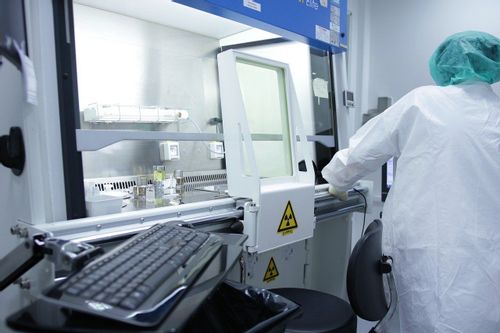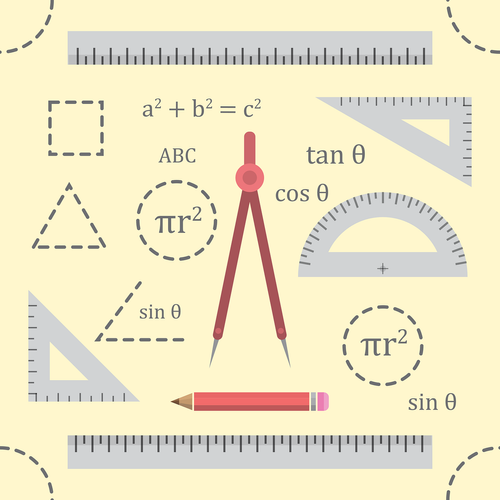Standards Packages
iTeh together with SIST has developed and compiled a comprehensive collection of standard packages to support your standard requirements. Our packages cover an array of content that includes quality management, risk management, road vehicles, machine safety, and much more. With over 200 packages to choose from, you are sure to find a collection to suit your standard needs.
Latest Standards
The purpose of this document is to provide customers and their suppliers with a document specifying the notions of product reliability "construction" and "management".
It offers programme directors and project managers information likely to help them:
- determine the tasks to be performed and the application procedures, according to the specific nature of the programme and its goals;
- define and implement the provisions necessary for performing these tasks;
- within programme execution, situate the various tasks involved in constructing and managing the reliability of a product.
This document applies to all programmes (in particular aeronautical, space and armament programmes).
These reliability construction procedures concern not only all the products and its constituents covered by these programmes, but also the means and manufacturing processes to be implemented for their realization.
The provisions of this document can be negotiated at all levels between the parties directly concerned by a given programme. This implies, on the part of the customer, that each lower level is provided with the information necessary to perform tasks and meet the specified targets.
- Standard30 pagesEnglish languagesale 10% offe-Library read for1 day
This document specifies a test method for determining the leak tightness and the ease of operation and stop resistance of a valve made of thermoplastic material following an impact applied to the operating device.
- Standard12 pagesEnglish languagesale 10% offe-Library read for1 day
This document provides recommendations, requirements and checklists which can be used to support the specification and field testing of cryptographic modules in their field within an organization’s security system. The cryptographic modules have an overall security rating commensurate with the four security levels defined in ISO/IEC 19790:2025, to provide for: — a wide spectrum of data sensitivity (e.g. low-value administrative data, million-dollar funds transfers, life-protecting data, personal identity information, and sensitive information used by government), and — a diversity of application environments (e.g. a guarded facility, an office, removable media, and a completely unprotected location). This document is limited to the security related to the cryptographic module. It does not include assessing the security of the field or application environment. It does not define techniques for the identification, assessment and acceptance of the organization’s operational risk. This document applies to the field testers who perform the field testing for the cryptographic modules in their field and the authorizing officials of cryptographic modules.
- Technical specification44 pagesEnglish languagesale 15% off
The purpose of this document is to provide customers and their suppliers with a document specifying the notions of “construction” and “management” of product dependability and safety (RAMS).
It offers programme directors and project managers information likely to help them:
— determine the tasks to be performed and the application procedures, according to the specific nature of the programme and its goals;
— define and implement the provisions necessary for performing these tasks;
— within programme execution, situate the various tasks involved in constructing and managing the RAMS of a product.
This document applies to all programmes that involve customer/supplier relation.
RAMS management concerns not only all the products covered by these programmes, but also the components of these products and the production and support resources and processes to be implemented.
The provisions of this document can be negotiated at all levels between the parties directly concerned by a given programme. This implies, on the part of the ordering parties, that each lower level is provided with the information needed to perform the tasks and meet the specified targets. This also implies, on the part of suppliers, an escalation of information pertaining to the RAMS results of the products for which they are responsible.
This document is mainly concerned with the technical aspects, aspects of a legislative (in particular safety at work and regulatory conformity) and confidential nature are not dealt with in this document.
- Standard44 pagesEnglish languagesale 10% offe-Library read for1 day
This document contains selected examples for good practice approaches for the management of assets of wastewater systems. This document is intended as a supporting document for ISO 24516-3 and ISO 24516-4, which contain guidelines for the management of assets of wastewater systems. As such, this document can contribute to realize value from existing assets when following the guidelines for the management of assets of wastewater systems approaches in the strategic, tactical and operational plans given in ISO 24516-3 and ISO 24516-4. NOTE A recapitulative table of the examples covered in this document is provided in Annex A.
- Technical report33 pagesEnglish languagesale 15% off
This document specifies a test method for determining the fire resistance of various elements of construction when subjected to fire exposure conditions, represented with standardized time-temperature curves. The test data thus obtained will permit subsequent classification on the basis of the duration for which the performance of the tested elements under these conditions satisfies specified criteria.
- Standard48 pagesEnglish languagesale 15% off
This document specifies the characteristics of multilayer mechanical locked floor covering with a wear-resistant and decorative surface layer supplied in panels (either tile or plank form). The floor panels are considered suitable for domestic and commercial levels of use and designed for floating installation.
This document does not apply to resilient floor panels for loose-laying according to EN ISO 20326, to multilayer wood floorings according to EN 13489, to wood veneer floor coverings according to EN 14354, to laminate floor covering according to EN 13329, EN 14978 and EN 15468 nor to products specified in EN ISO 10581, EN ISO 10582, EN ISO 24011, EN 12104 and ISO 14486.
This document is applicable to areas which are subject to frequent wetting, e.g. bathrooms, laundry rooms or saunas, only if specified by the producer.
This document also includes requirements for marking and packaging.
In Annex A (informative), optional properties are given. In Annex B (informative), a test method for the classification of the flexibility is given.
- Standard15 pagesEnglish languagesale 10% offe-Library read for1 day
This document establishes the currently recognized approaches and special considerations needed when evaluating the in vitro and in vivo performance of absorbable metals and implants fabricated, in whole or in part, from them. This document describes how the evaluation of these metals can differ from those utilized for permanent non-absorbable implantable implants (or subcomponents), in that absorbable metal implants (or subcomponents) are – by design – intended to be absorbed in their entirety by the host. This document provides guidance regarding the materials considerations, in vitro degradation/fatigue characterization, and biological evaluation of medical implants made of absorbable metals. The provided content is intended to deliver added clarity to the evaluation of these materials and implants to increase awareness of critical factors and reduce potential for generation of erroneous or misleading test results. While this document and the herein described referenced standards contain many suggested alterations or modifications to currently practiced procedures or specifications, the provided content is intended to complement, and not replace, current conventions regarding the assessment of implantable implants. This document covers the evaluation of absorbable metal specific attributes in general and is not intended to cover application or implant specific considerations. Thus, it is important to consult relevant implant and/or application specific standards. This document does not apply to non-absorbable or non-metallic components (e.g. polymeric coatings, pharmaceuticals, non-absorbable metals) used in conjunction with absorbable metal implants.
- Technical specification14 pagesEnglish languagesale 15% off
This document defines the common terms, abbreviations and references used throughout the EN 9300 series of standard parts.
- Standard41 pagesEnglish languagesale 10% offe-Library read for1 day
This document specifies a method for determining the scratch properties of plastics under defined conditions. The method defined in this document is used to investigate the behaviour of specified types of specimens under the scratch conditions defined and for classifying the type of scratch of specimens within the limitations inherent in the test conditions. It can also be used to determine comparative data for different types of material by means of a so-called scratch map in which the types of scratch behaviour for each set of test conditions of test load and test speed are determined using the basic method of constant-load testing, and also by means of the so-called critical normal load determined using an alternative method of linearly increasing load testing. The method is suitable for use with the following range of materials. — thermoplastic moulding, extrusion and casting materials, including filled and reinforced compounds in addition to unfilled types; — thermosetting moulding materials, including filled and reinforced compounds; — thermosetting sheets, rigid thermoplastic moulding and extrusion materials, including filled and reinforced compounds in addition to unfilled types. The method specifies the preferred dimensions for the test specimen and the preferred scratch-tip geometry.
- Standard18 pagesEnglish languagesale 15% off
This document specifies the rules for indicating centring and tilt tolerances for optical elements, subassemblies, and assemblies in the ISO 10110 series, which standardizes drawing indications for optical elements and systems. This document applies to plano surfaces, rotationally invariant (spherical and aspherical) surfaces, circular and non-circular cylindrical (cylindrical and acylindrical) surfaces, and non-symmetrical surfaces (general surfaces). General surfaces are described using ISO 10110-19.
- Standard28 pagesEnglish languagesale 15% off
- Standard28 pagesFrench languagesale 15% off
This document specifies the requirements for permanent paper intended for documents. It is applicable to unprinted papers. It is not applicable to boards. NOTE 1 The terms paper and board are defined in ISO 4046-3. This document is not intended for judging the permanence of papers stored under hostile conditions, such as high humidity that can promote microbiological attack, excessive heat, radiation (light or other), high levels of atmospheric pollutants, or the influence of water. NOTE 2 For information on International Standards on paper permanence (ISO 9706), on archival paper permanence and durability (ISO 11108), and on paper stability for general graphic applications (ISO 20494), refer to Annex D.
- Standard10 pagesEnglish languagesale 15% off
- Standard12 pagesFrench languagesale 15% off
This document specifies a method for the determination of the temperatures and enthalpies of melting and crystallization of crystalline or partially crystalline plastics using conventional DSC as specified in ISO 11357-1. This document is not applicable to fast DSC as specified in ISO 23976.
- Standard6 pagesEnglish languagesale 15% off
- Standard6 pagesFrench languagesale 15% off
This document establishes conformance testing for the requirements described in ISO/IEC 24787-1, which are: — framework for on-card biometric comparison, both in sensor-off-card systems and as part of Biometric System-on-Card; — security policies for on-card biometric comparison. Measuring the performance of on-card biometric comparison algorithms such as error rates or speed is not within the scope of this document.
- Standard19 pagesEnglish languagesale 15% off
This document specifies methods for the determination of major and minor element concentrations in solid recovered fuels after digestion by the use of different acid mixtures and by addition of a fluxing agent for solid recovered fuel (SRF) ash.
a) Method A: Microwave assisted digestion with hydrochloric, nitric and hydrofluoric acid mixture (6 ml HCl; 2 ml HNO3; 2 ml HF) followed by boric acid complexation;
b) Method AT: Microwave assisted digestion with hydrochloric, nitric and tetrafluoroboric acid mixture (6 ml HCl; 2 ml HNO3; 4 ml HBF4);
c) Method B: Microwave assisted digestion with hydrochloric, nitric and hydrofluoric acid mixture (0,5 ml HCl; 6 ml HNO3; 1 ml HF) followed by boric acid complexation;
d) Method BT: Microwave assisted digestion with hydrochloric, nitric and tetrafluoroboric acid mixture (0,5 ml HCl; 6 ml HNO3; 2 ml HBF4);
e) Method C: Microwave assisted digestion with nitric acid, hydrogen peroxide and hydrofluoric acid mixture (2,5 ml H2O2; 5 ml HNO3; 0,4 ml HF) and optional boric acid complexation;
f) Method CT: Microwave assisted digestion with nitric acid, hydrogen peroxide and tetrafluoroboric acid mixture (2,5 ml H2O2; 5 ml HNO3; 0,8 ml HBF4);
g) Method D: Digestion of the ashed SRF sample with fluxing agent lithium metaborate in an oven at 1 050 °C.
This document is applicable for the following major and minor/trace elements:
— Major elements: aluminium (Al), calcium (Ca), iron (Fe), potassium (K), magnesium (Mg), sodium (Na), phosphorus (P), sulfur (S), silicon (Si) and titanium (Ti).
— Minor/trace elements: arsenic (As), barium (Ba), beryllium (Be), cadmium (Cd), cobalt (Co), chromium (Cr), copper (Cu), mercury (Hg), molybdenum (Mo), manganese (Mn), nickel (Ni), lead (Pb), antimony (Sb), selenium (Se), tin (Sn), thallium (Tl), vanadium (V) and zinc (Zn).
Method A is applicable for general use for SRF and ashed SRFs, but the amount of the test portion can be very low in case of high concentration of organic matter. Method AT can be used if an alternative to HF is necessary.
Method B with a higher volume of nitric acid is applicable for SRFs with high organic matter (e.g. suitable for high plastic content) that can be difficult to digest with less nitric acid or as a substitute for method A if appropriate equipment is not available. Method BT can be used if an alternative to HF is necessary.
Method C with combination of nitric acid and hydrogen peroxide and addition of hydrofluoric acid is applicable for wood based SRFs (e.g. demolition wood) or when there is a need for comparability to solid biofuel standards. Method CT can be used if an alternative to HF is necessary.
Method D is specifically applicable for determination of major elements in ashed SRF samples.
XRF can be used for the analysis of major elements (Al, Ca, Fe, K, Mg, Na, P, S, Si, Ti) after ashing (815 °C) of the samples and several major and minor/trace elements in SRF can be analysed by XRF after suitable calibration provided that the concentration levels are above instrumental detection limits of the XRF instrumentation and after proper preliminary testing and validation.
Digestion methods with HF and subsequent boric acid complexation or application of method D are applicable for determination of Si and Ti (better digestion efficiency).
Alternative digestion methods can be applied, if their performance is proved to be comparable with those of the methods described in this document.
- Standard92 pagesEnglish languagesale 10% offe-Library read for1 day
This document specifies a method for determination of the mechanical durability of pellets. The mechanical durability is a measure of the resistance of compressed fuels towards shocks and/or abrasion as a consequence of handling and transportation.
- Standard14 pagesEnglish languagesale 10% offe-Library read for1 day
DEN/ERM-TGUWB-627
- Standard49 pagesEnglish languagesale 15% off
- Standard49 pagesEnglish languagesale 15% off
- Standard49 pagesEnglish languagesale 15% off
- Standard49 pagesEnglish languagesale 10% offe-Library read for1 day
This European Standard deals with the safety of electric sewing machines for household and similar use, their rated voltage being not more than 250 V for single-phase and 480 V for other appliances.
- Standard20 pagesEnglish languagesale 10% offe-Library read for1 day
This European Standard deals with the safety of stand-alone electric spin extractors, and pin extractors incorporated in washing machines that have separate containers for washing and spin extraction for household and similar purposes that have a capacity not exceeding 10 kg of dry cloth and a drum peripheral speed not exceeding 50 m/s, their rated voltages being not more than 250 V for single-phase appliances and 480 V for other appliances
- Standard25 pagesEnglish languagesale 10% offe-Library read for1 day
Benefits

Full Standards Solution
Our catalog includes not only latest standards but also full meta information about related standardization project lifecycle.

Cost Effective
Our PRICE MATCH GUARANTEE policy with multi-level volume discounts gives our clients the best option in the market. In addition, you can get access to the standards for 3, 10, or 30 days.

Stay Notified
Get alerted to the latest revisions and new standards in the Weekly Newsletter. Standards are constantly changing. Don’t miss a revision that can impact your business.
About Us
iTeh Inc is a software development and IT consulting team of professionals who provide consulting, development and implementation of solutions for all types of businesses.
In cooperation, with the Slovenian Institute of Standardization (SIST), we create a unique solution that covers all aspects of the lifecycle of Standardization organizations. iTeh Standards is a part of the solution that helps SIST to provide and sell their products to Customers.
iTeh Standards Store is an evolving project, our goal is to build long-term relationships with our customers. We believe in delivering quality services to solve our customers' challenges and define success by exceeding our customers' expectations. We are always ready to listen and our experience allows us to provide our customers with helpful effective suggestions. You can contact us by email.
We are committed to providing the best possible experience for our customers.
Compliance with international standards is increasingly becoming one of the key competitive advantages in the global market. Our company creates all conditions for the most comfortable implementation of new documents and norms in the processes carried out by your organization. Some of the key advantages of working with us are:
- Cost-effective - multi-level discounts and permanent updates of the functions give our clients the best option on the market.
- e-Library - access to standards for a period of time of your choice. It is a cost-effective solution for keeping updated with the newest standards.
- Company-wide documents - create a company account and connect all employees with access to purchased standards, e-Library documents, and packages.
- All in one spot - all purchased standards are kept in one place with controlled access by the account administrator.
- Client-centric - providing quality consulting is the prerogative and incentive to create new products that accompany your success and scale.
- 24 / 7 client support
We are dedicated to building mutually beneficial and long-term relationships with our clients. That is why our team focuses on creating services to help our customers develop and achieve new productive results.
























